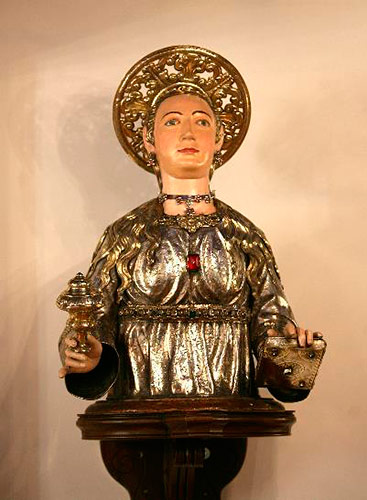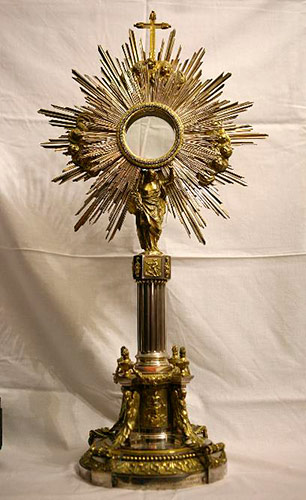26 September
Global Seminars & Invited Speaker Series
VIANA ON ITS VIII CENTENARY: CULTURE AND HERITAGE
Decorative arts in Viana
Ignacio Miguéliz Valcarlos
Chair of Navarrese Heritage and Art
Thanks to the documentation and the pieces preserved, it can be said that the temples of Viana were well stocked with decorative arts pieces for the celebration of liturgical ceremonies, both sumptuous objects made of silver and rich ornaments embroidered in gold, silver and silk threads. However, the vicissitudes of history have meant that a large part of these works have been lost over the years, and what remains today is a pale reflection of what was once there. The wars against France in which Spain was immersed at the end of the 18th century and the beginning of the 19th century, followed by the Carlist wars in the latter century, led to the disappearance of much of the wealth of the city's temples, which were largely used to defray the costs of the war. Among the missing pieces are two works that attracted the attention of their contemporaries due to their wealth: a monstrance with its platforms and an altar frontal. The first, carved in Madrid, was donated in 1773 by Manuel Prudencio Molviedro, a native of Viana, who had made his fortune as an attendant to the king; while the second, carved by the Estella silversmith Manuel Ventura, was donated in 1784 by Doña Manuela de Lanciego.
Thanks to documentation, we also know of the settlement of several silversmiths in Viana throughout history, who, although established with a certain continuity, did not have the importance and the issue of other towns in Navarre. At times when there was no goldsmith in the town, the temples of the city resorted to masters from Logroño or Zaragoza, the former as the closest town to Viana and the latter as the most important centre in the region, and they rarely went to Pamplona. All this is reflected in the pieces that have survived to the present day, on which we can see the marks of these two silversmiths' centres. Along with these works, the group of jewellery from America is also important, both for the quality of the pieces and for the fact that one of them has punches from independent Mexico, which demonstrates the continuity in the relationship between the Peninsula and America even after the independence of the viceroyalties.
However, we would like to focus our attention on three pieces that seem to us to be of singular importance; two of them can be linked to the donation of two illustrious sons of the city, both archbishops, the first, Don Francisco Ignacio de Añoa y Busto, from Zaragoza, and the second, Don Rafael Múzquiz y Aldunate, from Santiago de Compostela, while the third would respond to a direct commission from the parish of Santa María.
Don Francisco Ignacio de Añoa y Busto, archbishop of Saragossa, is the patron saint of the city, the magnificent bust of Mary Magdalene. It is a piece carved in Saragossa, following models from this workshop. It also has the peculiarity that the archbishop did not give it as a gift to the church, but to the town, which is why it is kept in the Town Hall's plenary hall. It was made in 1750 by the Zaragozan silversmith Juan Gargallo, whose mark is stamped on the image.

Bust of the Magdalena. Viana Town Hall. 1750.
The next piece is the processional cross of the church of Santa María, made in 1798 at the request of the parish church of Santa María by the Logroño silversmith José Urra following design by Luis Paret y Alcázar, the king's chamber painter who was in exile in Bilbao and whom the church in Vigo called upon to paint the paintings in the chapel of San Juan del Ramo and its ornamental design . Several years later, in 1806, the goldsmith Pablo Zaporta, also from Logroño, added the macolla.

Processional cross. Church of Santa María. 1798.
Finally, in 1816, the archbishop of Santiago de Compostela, Rafael Múzquiz y Aldunate, gave the church of Santa María a monstrance to replace the one lost during the French invasion. Subsequently, and due to the fact that the weight of the piece made it very uncomfortable to carry, the archbishop also donated some silver-plated wooden platforms made in Pamplona, which were sold in Logroño in 1837 to defray the expenses caused by the First Carlist War.

Monstrance. Church of Santa María. 1816.
